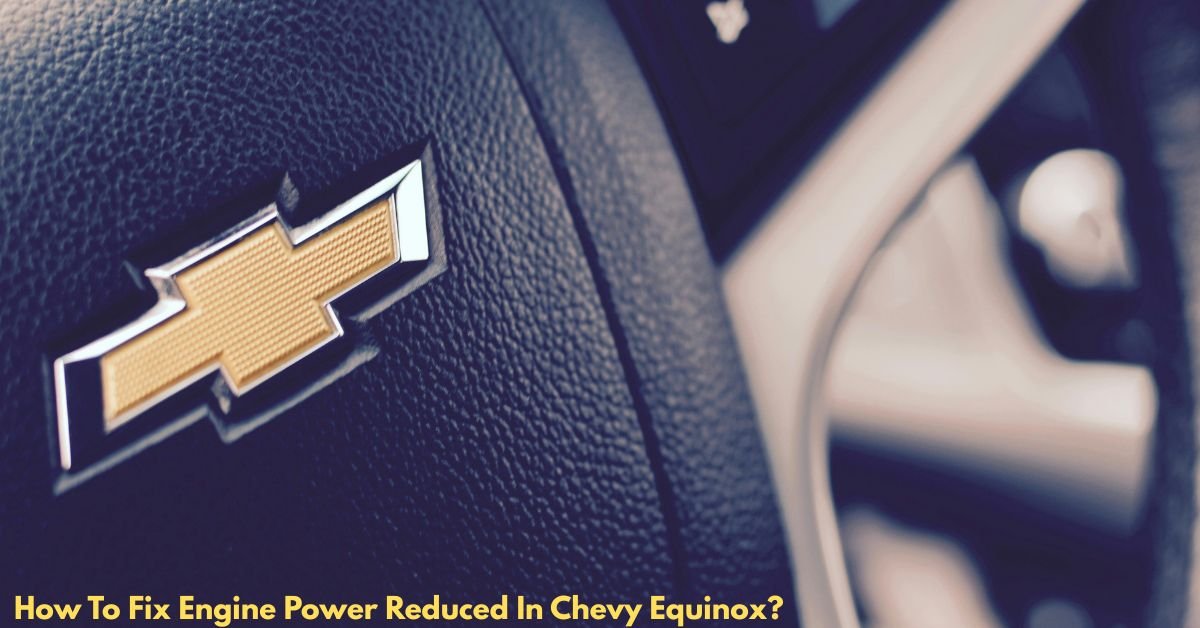If you own a Chevy Equinox, chances are you’ve experienced—or heard of—the dreaded “Engine Power Reduced” warning. This message appears on your dashboard and is often accompanied by sluggish acceleration, a noticeable lack of power, and sometimes the inability to drive over a certain speed. It’s frustrating, especially if it happens without warning. What does it actually signify, though, and how can it be fixed?
Let’s dive into the common causes of the “Engine Power Reduced” message and how you can diagnose and fix the issue.
How to Fix “Engine Power Reduced” in Chevy Equinox: A Step-by-Step Guide
What Does “Engine Power Reduced” Mean?
When your Chevy Equinox displays this warning, it’s entering what is commonly known as “limp mode.” This safety feature is designed to prevent further damage to the engine or transmission. Essentially, the vehicle limits your speed and engine output until the issue is resolved.
This warning is usually triggered by a fault detected by the Engine Control Module (ECM). These flaws might be anything from little sensor problems to major mechanical problems.
Common Reasons for Chevy Equinox “Engine Power Reduced”
- Faulty Throttle Body or Throttle Position Sensor (TPS)
This is one of the most common culprits. The ECM depends on the throttle body and TPS to manage air intake. If they fail or become dirty, it disrupts engine performance and triggers limp mode. - Bad Accelerator Pedal Position Sensor (APP Sensor)
This sensor tells the ECM how much you’re pressing the gas pedal. If the data from the APP sensor is inconsistent or missing, your car may default to reduced power mode. - Wiring or Connector Issues
Damaged wires, corroded terminals, or loose connections—especially around the throttle body—can send false readings to the ECM. - Failed Mass Air Flow (MAF) Sensor
A dirty or malfunctioning MAF sensor can throw off your fuel-air mix, leading to reduced power. - Battery or Charging Problems
Voltage issues from a weak battery or faulty alternator can impact sensor readings and trigger warning messages. - Software Glitches or ECM Problems
Sometimes problems arise because of faulty or out-of-date software in the ECM. A software update or ECM reset might fix it.
How to Fix the Problem
Step 1: Read the Trouble Codes
You’ll need an OBD-II scanner to check the codes stored in your car’s computer. The codes can be read for free at the majority of auto parts outlets. Common codes related to this issue include P1516, P2101, P2135, and others.
Step 2: Inspect the Throttle Body
If you get a throttle-related code, inspect the throttle body:
- Disconnect the battery.
- Remove the air intake tube.
- Check for carbon buildup or dirt.
- Clean with throttle body cleaner.
- Reinstall and test the vehicle.
You might have to replace the throttle body entirely if the problem continues.
Must Read: How To Get Engine Oil Stains Out Of Clothes?

Step 3: Check Accelerator Pedal Sensor
The APP sensor needs to be changed if it is defective. This is usually a straightforward process:
- Disconnect the battery.
- Remove the old sensor (usually mounted on the pedal).
- Install the new one and reconnect.
Step 4: Inspect Wiring and Connectors
Follow the wiring to the accelerator pedal and throttle body. Look for:
- Frayed or broken wires
- Corrosion on connectors
- Loose plugs
Repair or replace any damaged components.
Step 5: Reset the ECM
Sometimes, clearing the trouble codes after a fix is all it takes. You can do this with your OBD-II scanner or by disconnecting the battery for 15 minutes. Keep in mind: If the underlying issue isn’t fixed, the warning will return.
Step 6: Visit a Mechanic
If you’re not comfortable performing these checks yourself—or if the issue persists—it’s time to consult a professional. Some problems, especially ECM-related faults, require dealership tools and expertise.
Preventing Future Issues
To prevent this problem from returning:
- Clean the throttle body every 30,000 miles.
- Check for software updates with your dealership.
- Inspect and replace air filters regularly.
- Maintain the health of your charging system and battery.
Final Thoughts
Seeing the “Engine Power Reduced” warning in your Chevy Equinox can be alarming, but it doesn’t always mean a costly repair. With a little knowledge and the right tools, many issues can be diagnosed and fixed at home. Whether it’s cleaning your throttle body, replacing a sensor, or inspecting some wires, addressing the root cause quickly can save you time and money—and get your Equinox back on the road at full power.
